CASE STUDY: THE WACHOWSKIS’ ‘BOUND’ AND THE CONTEST FOR LESBIAN ADVOCACY
In 2016, Lilly Wachowski, following her sister, Lana, came out as transgender in a statement to Wind City Times: she asserted that the “hard reality” of this exposure was the confrontation of a world that is “openly hostile to you.”[1] It is this emphasis given to publicising marginalised discourse which has a poignant connection to their 1996 film, Bound.
When asked about what inspired them, the Wachowskis claimed they wanted to write a story about how one might see a woman and make ill-informed assumptions about her sexuality.[2] They also criticised the lack of diverse roles for women and wanted to address this through depicting female protagonists who embraced, and were not punished for, their ‘deviant’ sexualities.[3] As such, Bound represented a vehicle for ‘counterpublic’ discourse, which has been defined by Nancy Fraser as a discursive space for those subordinated from the bourgeois ‘public’ sphere.[4] Here, to examine how the Wachowskis aimed to establish this alternative space for explorations of lesbian sexuality can provide valuable insight on commercial films as modes of advocacy.
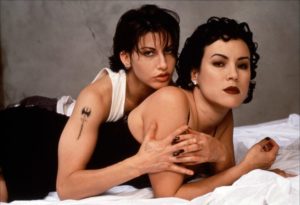
Primarily, the erotic construction of the relationship between the two protagonists, Violet and Corky, was integral. The Wachowskis employed Susie Bright, feminist writer and sex educator, as a consultant for the sex scenes.[5] Notably, Bright had founded Herotica: a series of erotic fiction aimed at women and written by women. She also had made educational films, such as The Virgin Machine (1988), which used the act of embracing sexuality as a liberating mode of feminist activism. The directors utilised Bright’s experience here to realistically depict lesbian sex, and importantly, without shame. As Bright told The Advocate,
“Unlike most lesbian scenes – you don’t want to be implying cunnilingus, you want to be implying penetration.”[6]
It was crucial that Bound’s eroticism was explicit with unapologetic clarity and did not perpetuate the dominant ‘safe’ portrayal of sexual acts between women, in which such acts are often left implicit.
However, the Wachowskis commented that in pursuit of an R rating, and to avoid an audience-limiting NC-17, they had to partially cut these penetrative implications.[7] On one hand, this reflected how the sexual philosophy that Bound promoted conflicted with the public sphere, and thus practiced discourse for a ‘counterpublic.’ In addition, this censoring can also inform us about how important a broad reach is for commercial film, financially, and as advocacy.
Moreover, on the topic of distribution, the Wachowskis stated that studios would have been more receptive to a heterosexual narrative, but “that movie’s been made a million times.”[8] In response, the directors approached producers and crew that shared their values, and kept costs to a relative minimum.
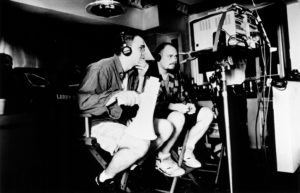
For instance, Dino de Laurentis, a producer that was actively involved in bringing Italian cinema to the international scene, funded their production budget of $4,500,000 and gave them narrative “free reign.”[9] Significantly, like the Wachowksis, he realised the importance of bringing transnational cultures, and therefore unheard discourse, to the public eye.
However, this was still a limited budget and their Director of Photography resigned due to limited funding. As a result, the directors approached cinematographer, Bill Pope; he recognised the potential of ambitious low-budget projects following his experience on other successful independent ventures, such as Sam Raimi’s Evil Dead Franchise. To expand, Pope was integral in creating the thematically elaborative shots with financial constraints. In an online interview, he disclosed that a speed aperture device was utilised for the telephone cord sequences, which enabled them to shoot at different speeds in the same shot.[10] In effect, it was Pope’s resourcefulness that enabled Bound with its beneficially low production costs.
This became evident when the Wachowskis approached Warner Bros for distribution and their low costs were met with encouragement: WB had previously released Diabolique, a loosely comparable erotic thriller, which had cost approximately $50-60 million and made a substantial loss.[11] In contrast, Bound’s budget of $4.5 million had profited from a relatively low ‘Worldwide’ Box Office income of $7,011,317 in its limited release across 241 theatres.[12] Thus, it was the Wachowskis’ acknowledgment of the industry’s prioritisation for profit which ensured that their counterpublic discourse could be distributed.
Moreover, San Francisco Frameline International LGBTQ Film Festival, where Bound screened on June 22nd, functioned as an effectual venue for this discourse.
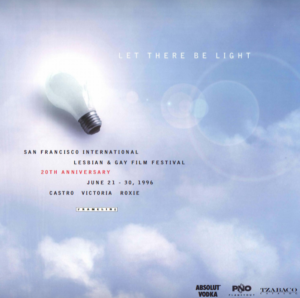
Frameline sought to “change the world through the power of queer cinema”, whilst simultaneously connecting filmmakers and audiences transnationally.[13] As asserted by Sindy Hing-Yuk Wong, through promoting the creative work of subordinated voices, the participants at these alternative festivals saw themselves as embodying ‘counterpublic’ spheres.[14]
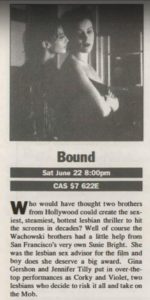
In their 1996 program, Frameline enthusiastically characterised Bound as the “sexiest, steamiest, hottest lesbian thriller to hit the screen.”[15] This view was influenced by the involvement of Susie Bright. Her media input had been featured here before, including Lets Talk About Sex (1994), which explored how the male gaze works to subjugate female desires in the pornographic industry. Therefore, this interconnection aided the integration of the film, as a commercial feature.
Furthermore, Bound benefited from an increasing demand for films of its kind at Frameline; although, this was also a time of contention. In 1993, the NEA withdrew funding from the festival which led to a demand for financial input from corporate businesses. [16] For instance, the 1996 presenting sponsors were substantial, ranging from Absolut Vodka, PNO Planetout to Tzabaco Catalog. This demand also included a new market for queer ‘Indiwood’ films, which the Wachowksis’ film was categorised.[17] However, this commercial influence provoked some scepticism. Comparably, A-list festivals and their focus on production, distribution and markets, and thus their proximity to wider publics, placed doubts about their creative integrity and ability to provide a venue for ‘counterpublics’.[18] Therefore, when alternative festivals practise a similar corporate dynamic, albeit on a smaller scale, it’s difficult to exempt them from these criticisms.
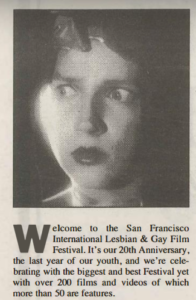
Despite this, as argued by Fraser, we don’t have to assume that ‘counterpublics’ are against separationism and Bound’s advocacy benefited from this philosophy.[19] For example, the 1996 guide also introduced Cheryl Dune’s The Watermelon Woman and proudly commended: “this is just the first of 16 lesbian features.”[20] Arguably, Frameline’s financial growth aided the progression of diverse representation in the lesbian community. In effect, the collaboration of marginalised communities and larger publics allowed festival members to see themselves as a potentially wider network; this functioned as a partial reclamation of lost representation. Consequently, Frameline’s expansion worked as a productive venue to broaden Bound’s counterpublic discourse.
Therefore, the Wachowskis worked within the economic demands of the film industry, whilst simultaneously benefiting from Frameline’s evolution, in order to further their advocacy. Ultimately, it was the commitment to distributing this ‘counterpublic’ discourse about sexuality, despite the obstacles that they faced, which is commendable.
[1] Tracy Baim, “Second Wachowski filmmaker sibling comes out as trans,” Wind City Times, March 8, 2016. http://www.windycitymediagroup.com/lgbt/Second-Wachowski-filmmaker-sibling-comes-out-as-trans-/54509.html.
[2] Josh Horowitz, “The Lost Wachowski Brothers Interview,” MoviePoopShoot, Nov 5, 2003, https://archive.li/lJHi
[3] “Wackowski Brothers Interview Bound Makers of The Matrix,” Youtube Video, 1.05, posted by “AllAboutTHeMatrix”, Sep 11, 2010, https://www.youtube.com/watch?v=9zHSNNGrgOM.
[4] Nancy Fraser, “Rethinking in Public Sphere: A Contribution to the Critique of Actually Existing Democracy,” Social Text, no.25/26 (1990): 67. (56-80).
[5] Scott Tobias, “How the Wachowskis’ craft saves Bound from being a sexploitation film,” AV Film, Sep 27, 2012, https://film.avclub.com/how-the-wachowskis-craft-saves-bound-from-being-a-sexp-1798233631.
[6] Alan Frutkin, “Bonnie and Bonnie. Behind the scenes of Bound. Hollywood’s latest big-screen killer lesbian flick,” The Advocate, Sep 5, 1995, p. 57.
[7] Wachowskis, Joe Pantoliano, Jennifer Tilly, Gina Gershon, Susie Bright, “Commentaries”, Bound, DVD, directed by Wackowskis (Gramercy Pictures, 1997).
[8] Nat Whilk and Jayson Whitehead, “Glory Bound. An Interview with Larry and Andy Wachowski,” GadflyOnline, Jan, 1998, http://www.gadflyonline.com/home/archive-wachowski.html.
[9] Christy Marx, The Wackowski Brothers: Creators of the Matrix (The Rosen Publishing Group, 2005), p. 19–21.
[10] Paul Martin, “Interview with Bill Pope (Director of Photography) from The Matrix (1999),” Matrix Fans, Feb 20, 2012, https://www.matrixfans.net/interview-with-bill-pope-director-of-photography-from-the-matrix-1999/.
[11] Whilk and Whitehead, “Glory Bound.”
[12] The Numbers, “Bound (1996),” the-numbers.com, https://www.the-numbers.com/movie/Bound-(1996)#tab=summary (accessed Nov 13, 2018).
[13] Frameline, “About,” frameline.org, https://www.frameline.org/about (accessed Nov 11, 2018).
14] Sindy Hing-Yuk Wong, “Publics and counterpublics: Rethinking film festivals as public spheres,” in Film Festivals: History, Theory, Method, Practice (Routledge, 2016), p. 90.
[15] 20th Anniversary San Francisco International Lesbian & Gay Film Festival Program Guide (Frameline, 1996), p. 15.
[16] Stuart Richards, “The Queer Film Festival and the Creative Industries,” The Queer Film Festival: Popcorn and Politics (US: Palgrave Macmillan, 2016), p. 50.
[17] Richards, “The Queer Film Festival,” p. 54.
[18] Wong, “Publics and counterpublics,” p. 92.
[19] Fraser, “Rethinking in Public Sphere”, p. 67.
[20] 20th Anniversary San Francisco, p. 3.
